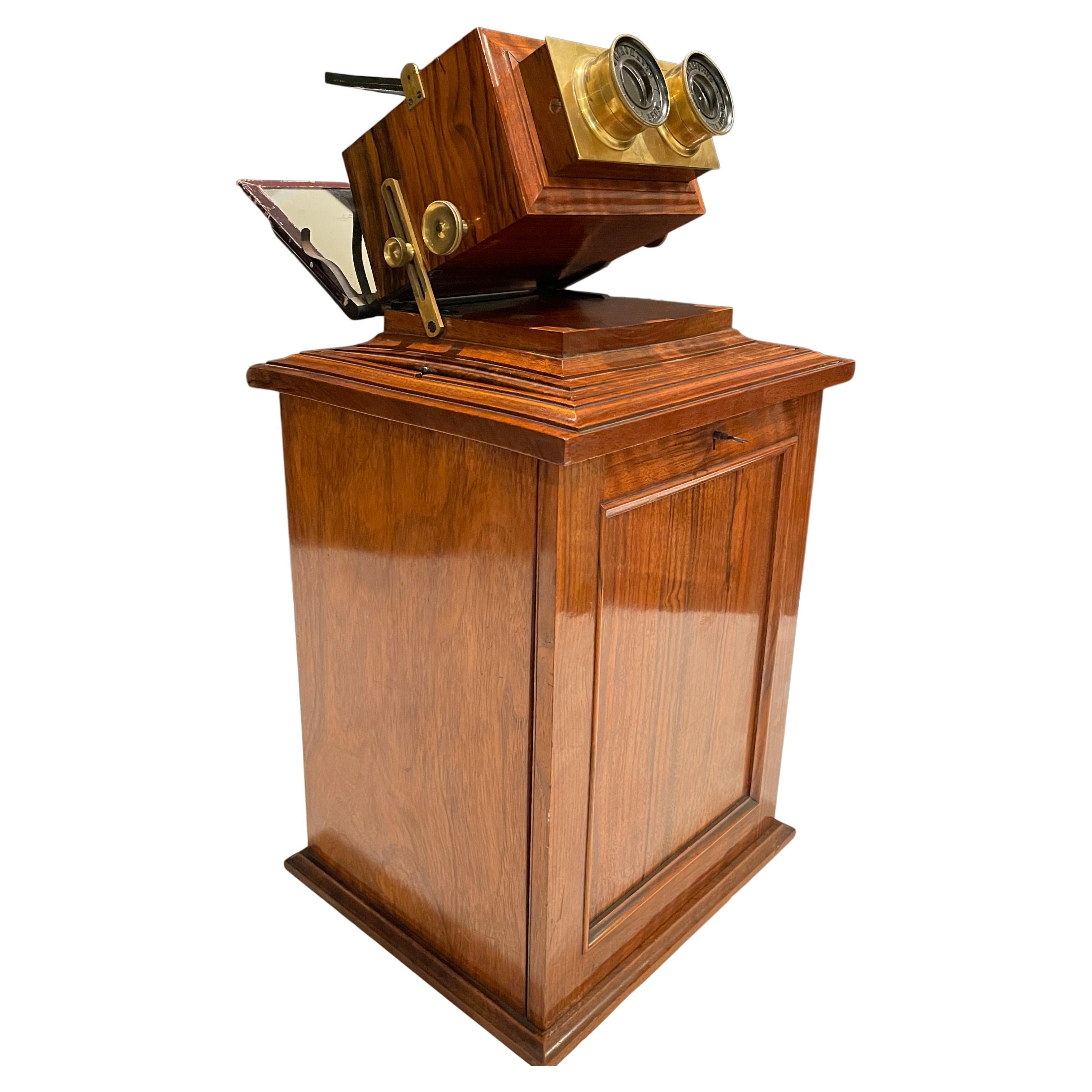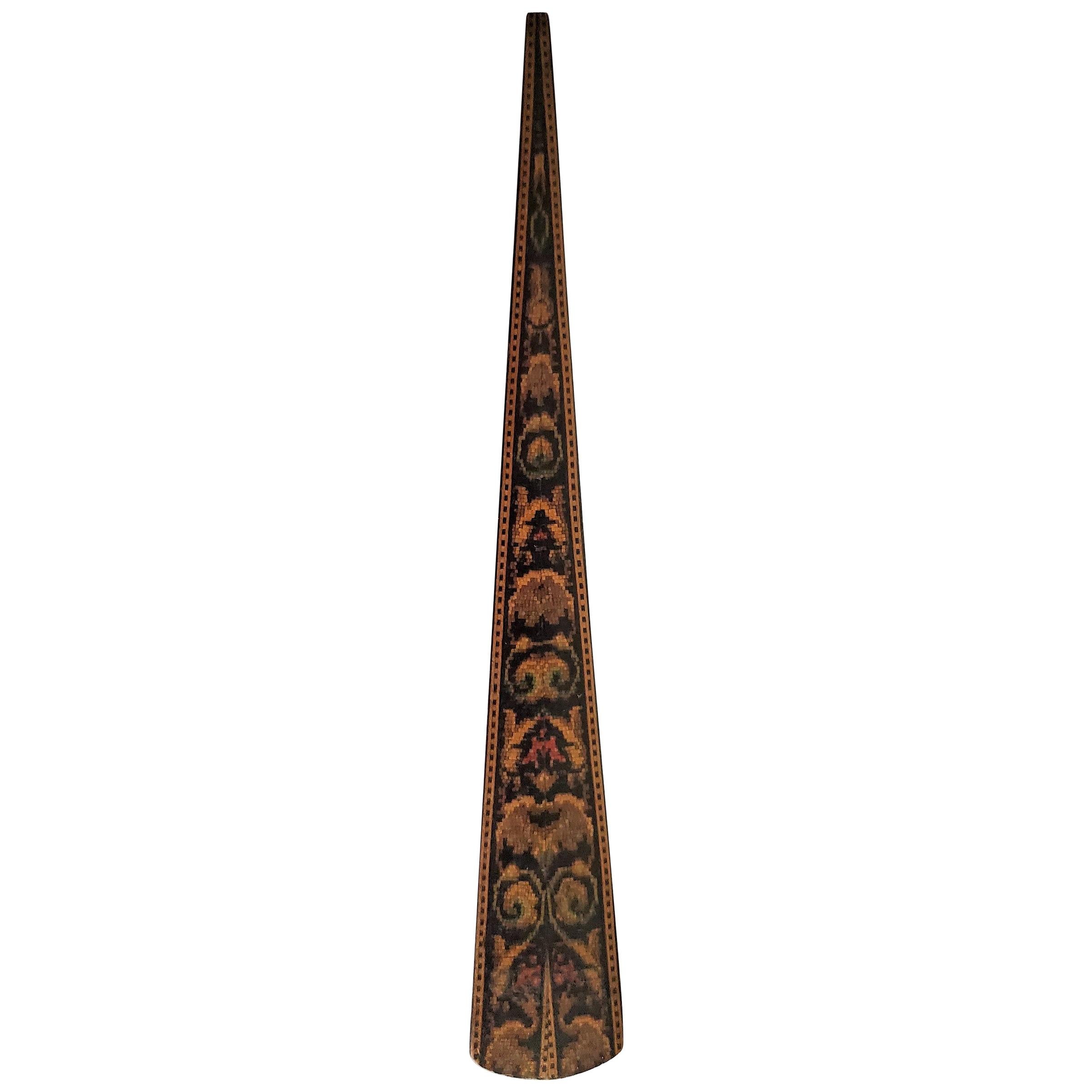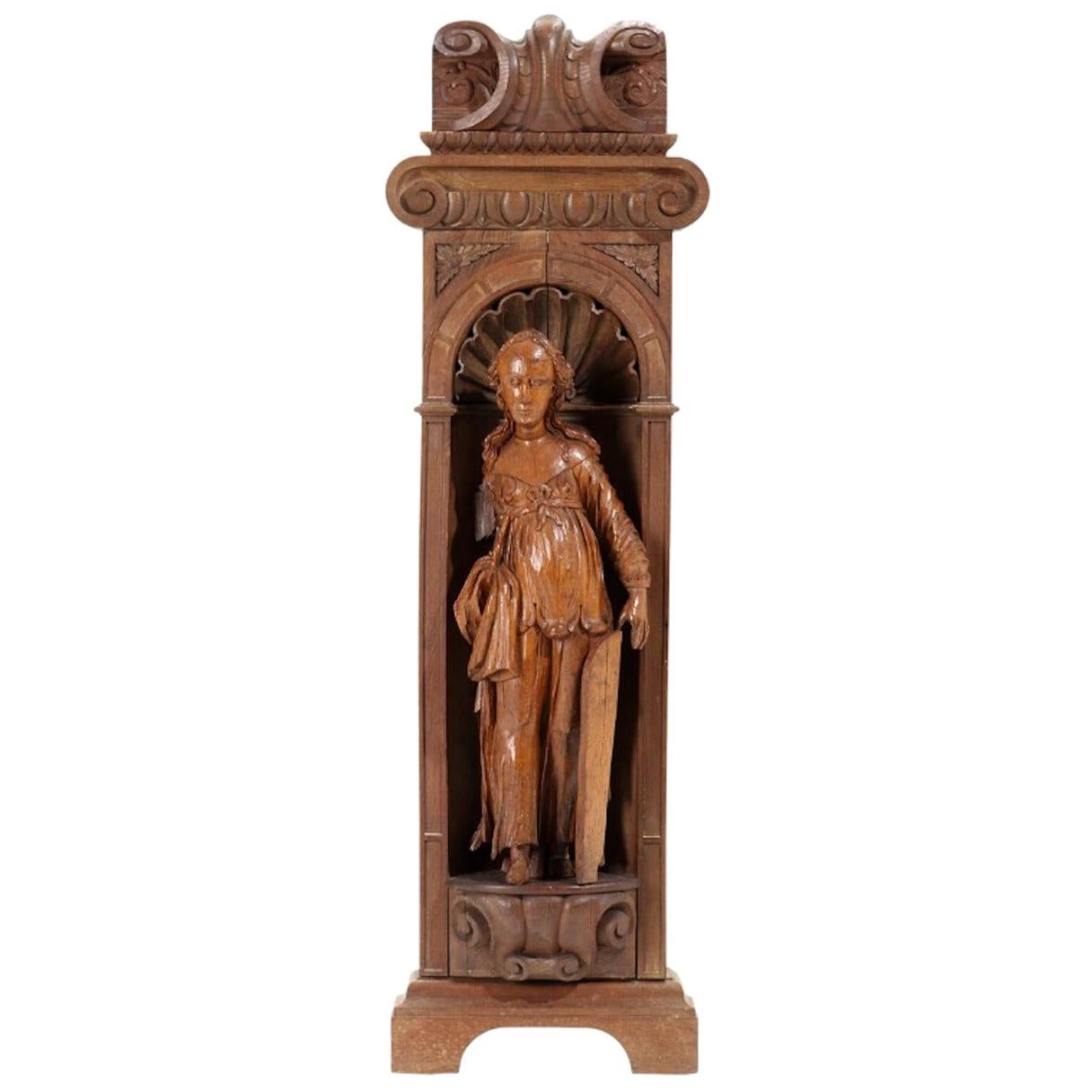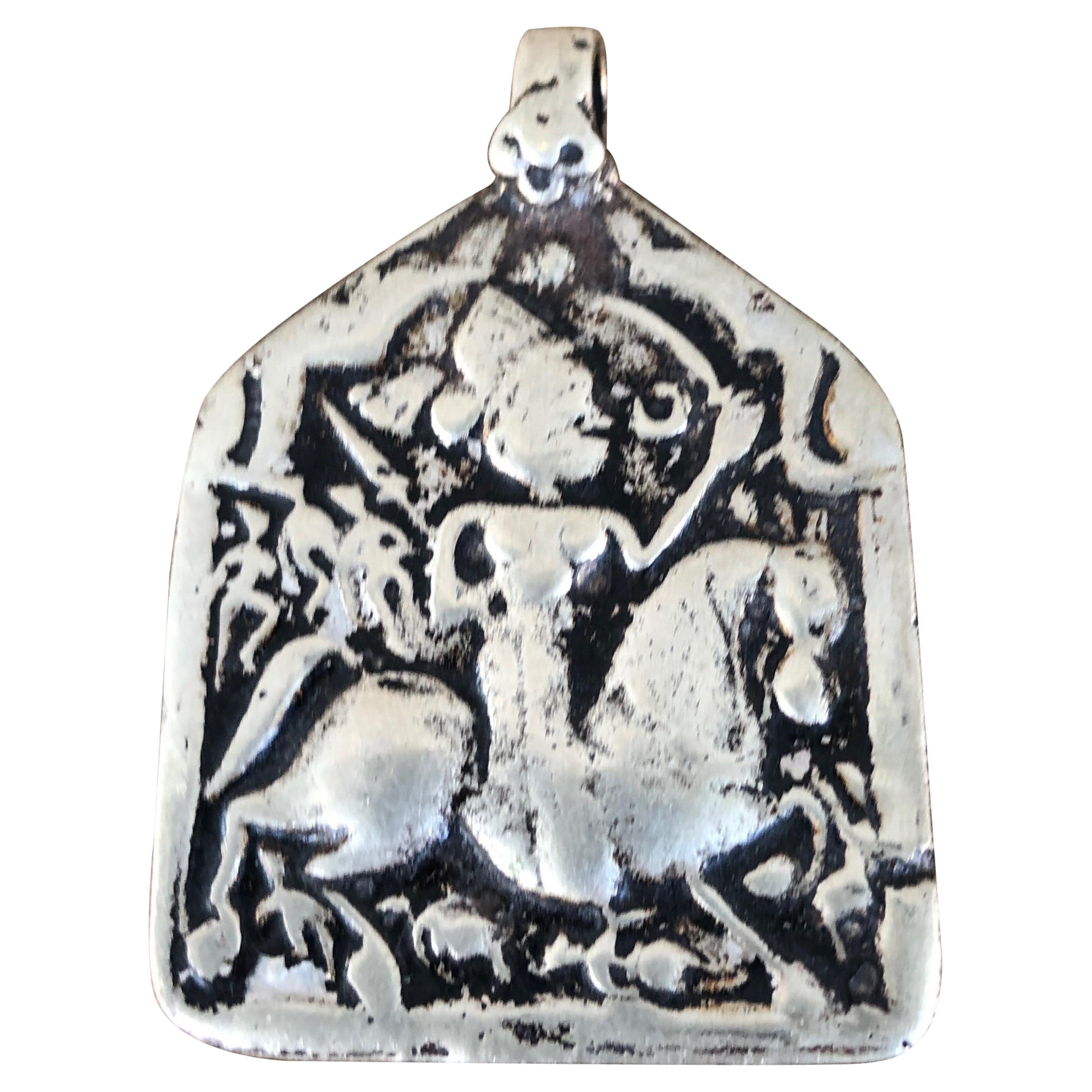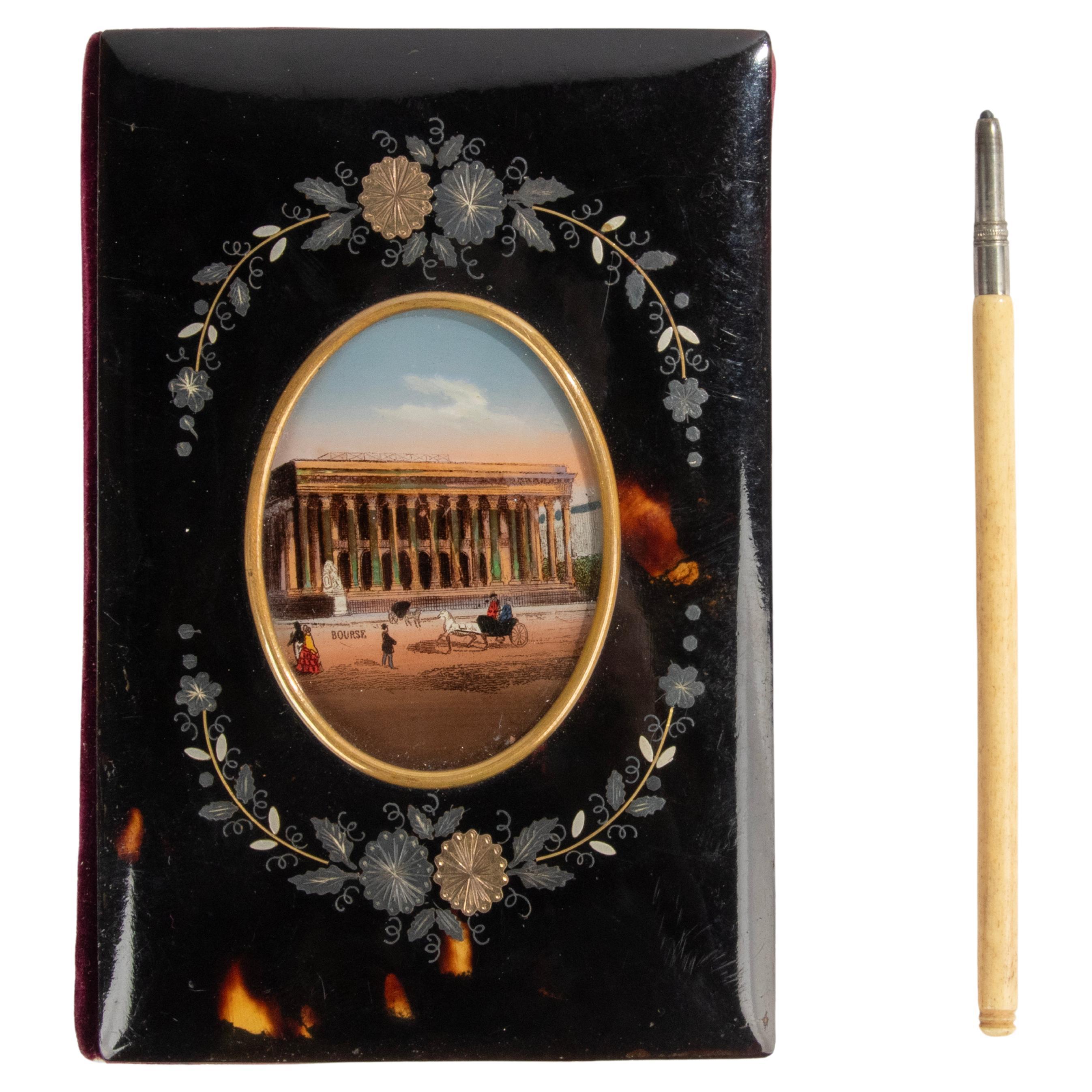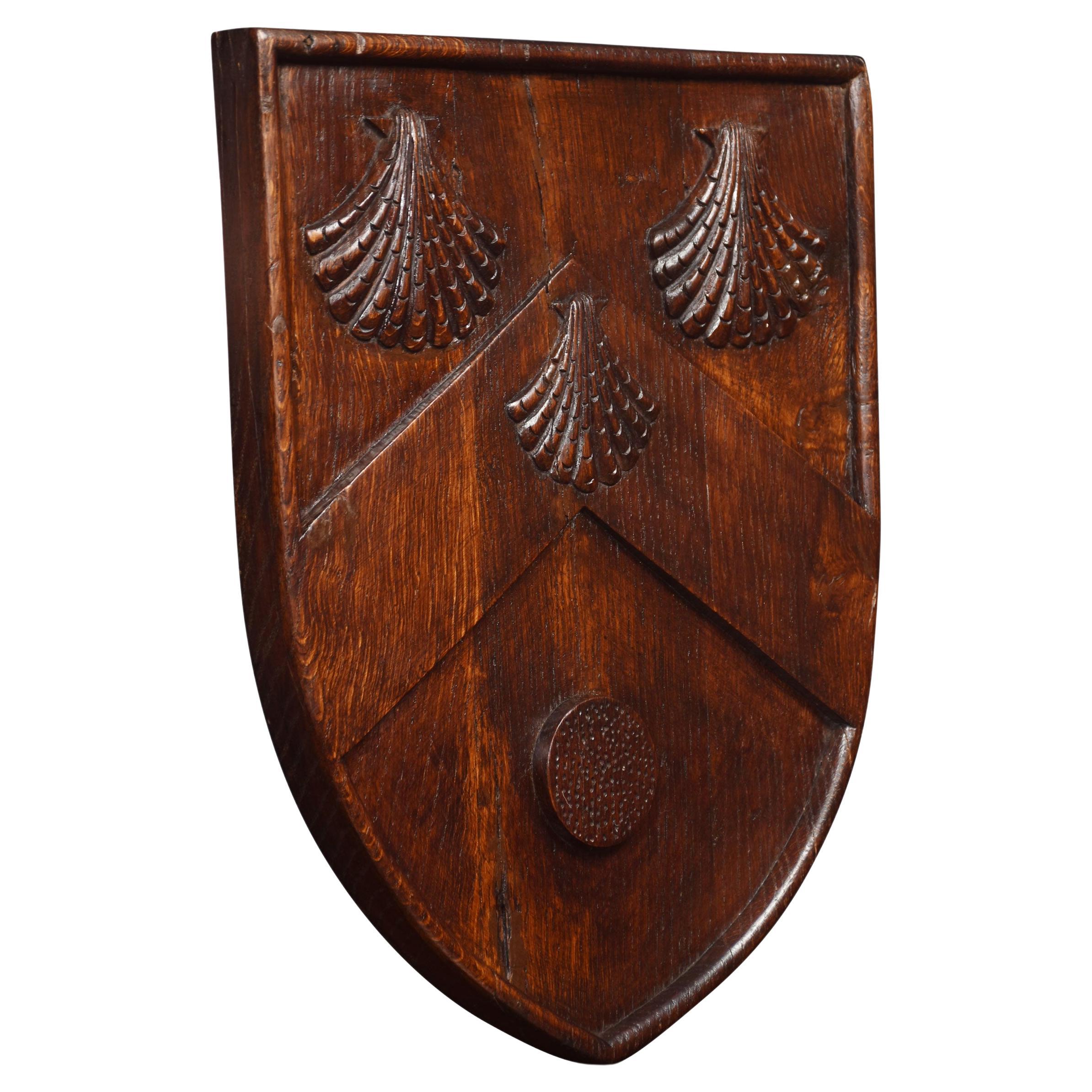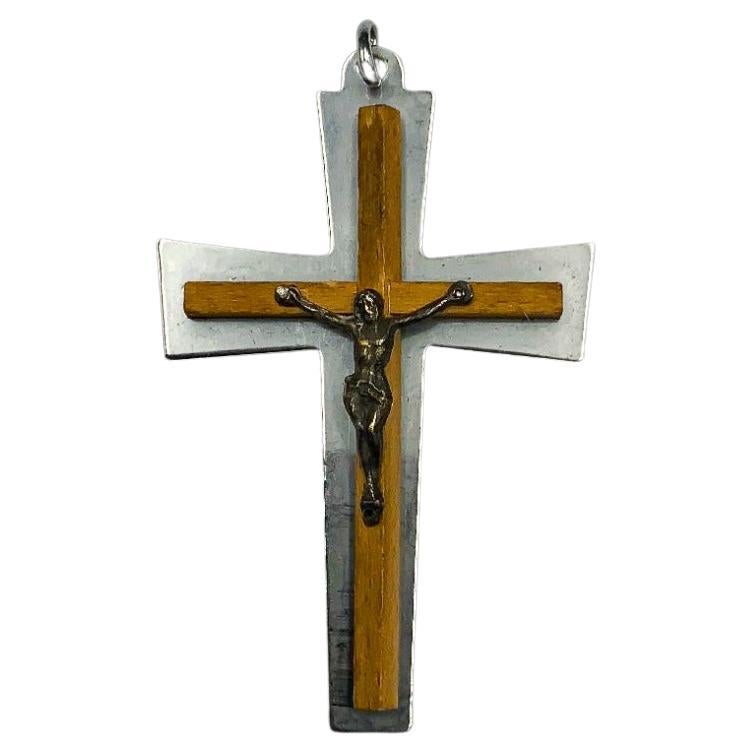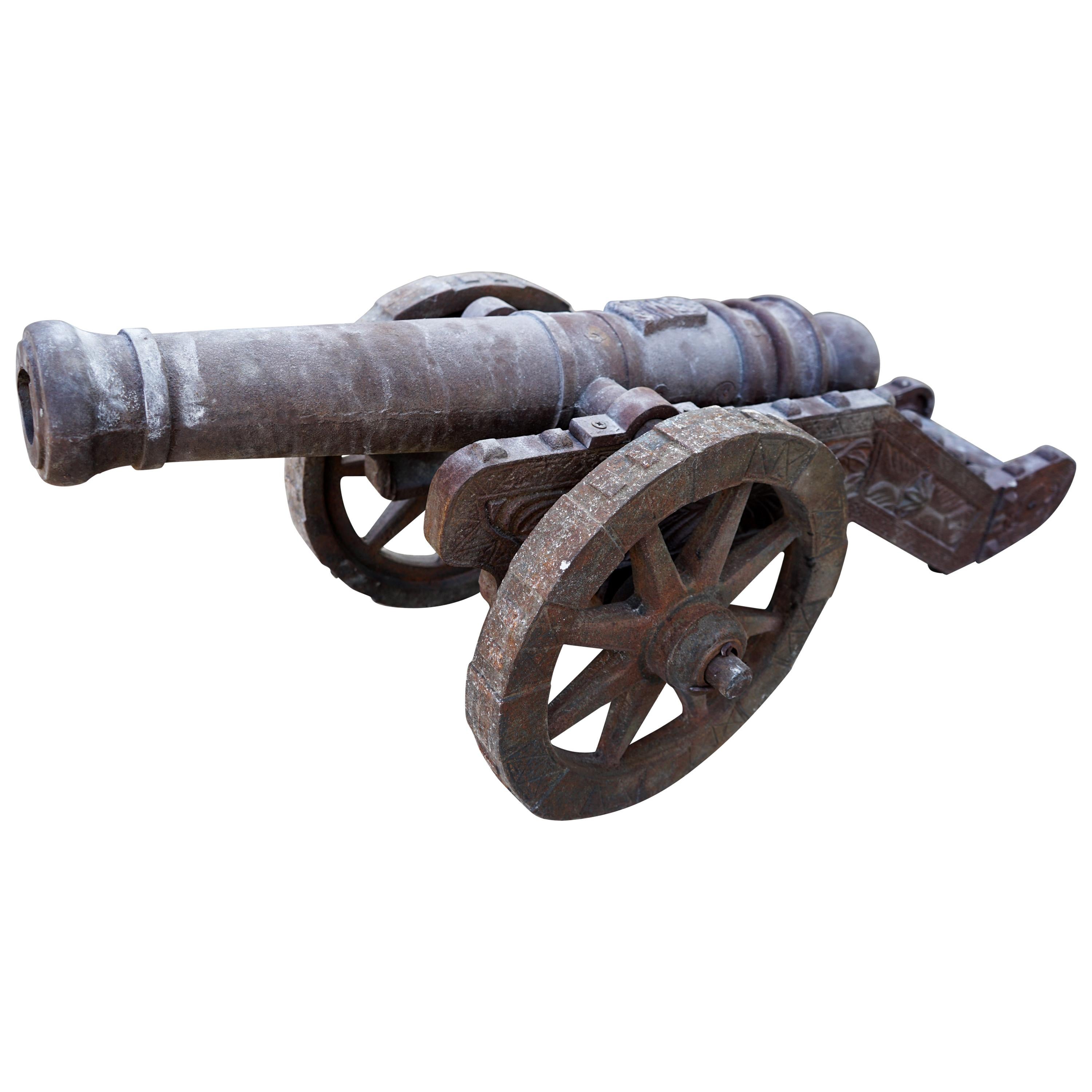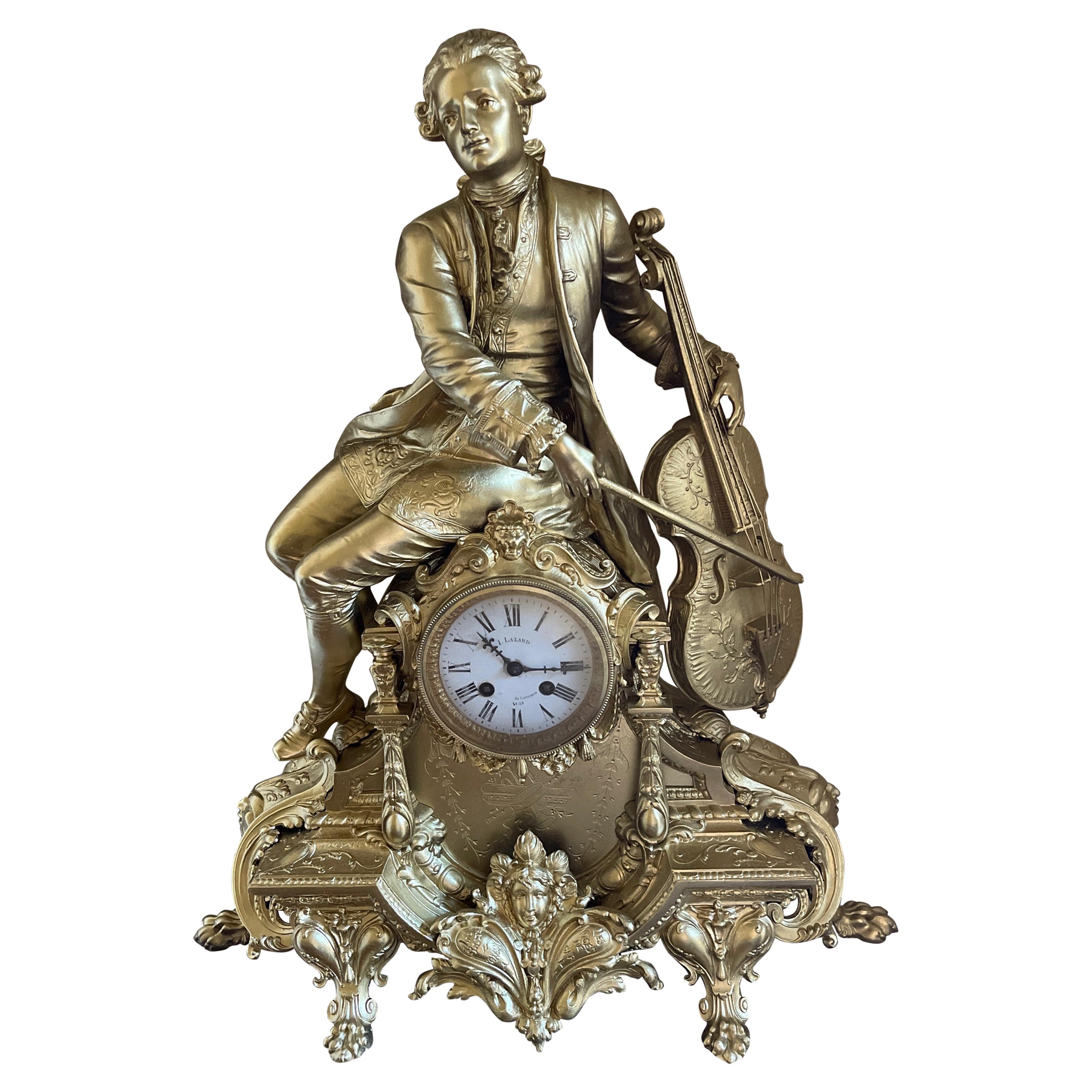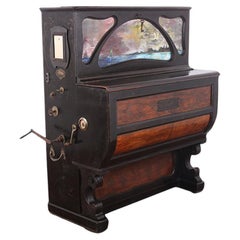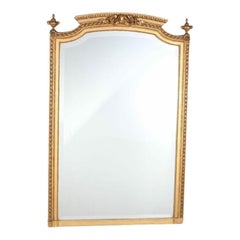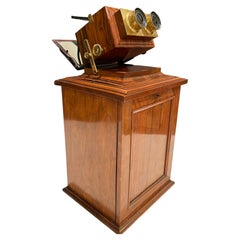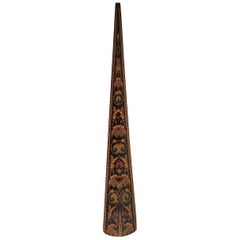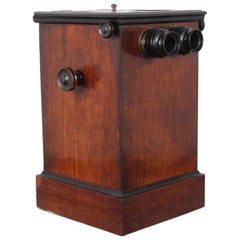
19th Century Stereoscope with Slides
View Similar Items
Want more images or videos?
Request additional images or videos from the seller
1 of 6
19th Century Stereoscope with Slides
About the Item
- Dimensions:Height: 17 in (43.18 cm)Width: 10.5 in (26.67 cm)Depth: 10.75 in (27.31 cm)
- Materials and Techniques:
- Place of Origin:
- Period:
- Date of Manufacture:1880
- Condition:Wear consistent with age and use.
- Seller Location:Vancouver, CA
- Reference Number:Seller: FI-17761stDibs: LU1386216912331
About the Seller
4.9
Vetted Seller
These experienced sellers undergo a comprehensive evaluation by our team of in-house experts.
Established in 1989
1stDibs seller since 2015
236 sales on 1stDibs
Typical response time: 3 hours
More From This SellerView All
- 19th Century Art Nouveau Player Piano, circa 1900Located in Vancouver, British ColumbiaA wonderful coin operated player piano from Paris, circa 1900. Needs tuning but functions. In original condition other than the repaint of top half. Would have originally had glass.Category
Early 20th Century French Art Nouveau Musical Instruments
MaterialsEbony
- 19th Century French Mahogany ConsoleLocated in Vancouver, British ColumbiaBeautiful solid Mahogany and veneered Louis Phillippe console from Paris. C.1880. Intricately carved base.Category
Antique Late 19th Century French Louis Philippe Console Tables
MaterialsWood
- 19th Century French Giltwood MirrorLocated in Vancouver, British ColumbiaA late 19th century giltwood mirror of fine quality and proportions. The beveled mirror is set within a hand carved, moulded giltwood frame with beaded row borders around. Surmounted...Category
Antique Late 19th Century French Wall Mirrors
MaterialsGiltwood
- French 19th Century Mahogany BookcaseLocated in Vancouver, British ColumbiaExceptional, 19th Century French Bookcase in Plum Pudding Mahogany. The tall upper body has 3 glazed doors that showcase a storage cavity that is outfitted with four adjustable shelv...Category
Antique Mid-19th Century French Bookcases
MaterialsMahogany
- Early 19th Century Mahogany GueridonLocated in Vancouver, British ColumbiaLouis Philippe mahogany gueridon / center table. The marble top is white & grey with a triple beveled edge. Standing on a flamed mahogany pedes, with curved carved legs and claw feet...Category
Antique 1820s French Gueridon
MaterialsMarble
- Exceptional 19th Century French BookcaseLocated in Vancouver, British Columbia19th Century French Louis XVI style bookcase. Exquisite marquetry in rosewood and kingwood. Adorned with original gilt br...Category
Antique Mid-19th Century French Bookcases
MaterialsBronze
You May Also Like
- 19th Century R. & J. Beck StereoscopeBy R.&J. Beck 1Located in Norwood, NJMuseum quality tabletop Stereoscope by British maker R. & J. Beck London. It is fitted with with adjustable rack and pinion focusing and elevation adjustment for ease of viewing. Eac...Category
Antique Late 19th Century English Victorian Historical Memorabilia
MaterialsBrass
- Dutch 19th Century gold sliding pencilLocated in Delft, NLDutch 19th Century gold sliding pencil A Dutch gold pencil holder in a ribbed motif with a sliding system. These pencil holders are usually made as...Category
Antique 19th Century Dutch Collectible Jewelry
MaterialsGold
- Rare 19th Century English Tunbridgeware Hair Pin or SlideLocated in Dallas, TXPresenting an absolutely gorgeous and extremely unique and rare 19th century British Tunbridgeware hair pin/bobbin or slide. This slide is unlike any of it’s kind we have seen before…. it is a very rare survivor ! From circa 1860–1880. Made of walnut with gorgeous marquetry inlay on the entirety of the front with classic Tunbridgeware micro-mosaic all over the front. The rear is walnut. The marquetry inlay appears to be various different woods, namely, maple, walnut and satinwood. Would have been worn in a Lady’s hair bun with the micro-mosaic facing forward. This would have belonged to a very elegant lady in the mid to late 19th century. Tunbridge ware is a form of decoratively inlaid woodwork, typically in the form of boxes, that is characteristic of Tonbridge and the spa town of Royal Tunbridge Wells in Kent in the 18th and 19th centuries. The decoration typically consists of a mosaic of many very small pieces of different coloured woods that form a pictorial vignette. Shaped rods and slivers of wood were first carefully glued together, then cut into many thin slices of identical pictorial veneer with a fine saw. Elaborately striped and feathered bandings for framing were pre-formed in a similar fashion. There is a collection of Tunbridge ware in the Tunbridge Wells Museum and Art Gallery in Tunbridge Wells. The famous makers of Tunbridge ware were in the Tunbridge Wells area of Kent; their most notable work was from circa 1830-1900. Early makers of Tunbridge ware, in Tunbridge Wells in the mid-18th century, were the Burrows family, and Fenner and Co. In the 19th century, around 1830, James Burrows invented a technique of creating mosaics from wooden tesserae. Henry Hollamby, apprenticed to the Burrows family, set up on his own in 1842 and became an important manufacturer of Tunbridge ware, employing about 40 people. Edmund Nye (1797–1863) and his father took over the Fenner company when William Fenner retired in 1840, after 30 years in partnership with him. Thomas Barton (1819–1903), previously apprenticed at the Wise factory, joined the Nyes in 1836, and worked as Nye’s designer; he took over the business in 1863 and continued there until his death. In Tonbridge (near to Tunbridge Wells), George Wise (1703–1779) is known to have had a business in 1746. It continued with his son Thomas, and Thomas’s nephew George (1779–1869), who took over in 1806. In its early years the company made articles such as workboxes and tea caddies with prints of popular views; later items had pictures created from mosaics. Their workshop in Tonbridge, Wise’s Tunbridge Ware Manufactory, was next to the Big Bridge over the Medway; the building was demolished in 1886 to widen the approach to the bridge. Tunbridge ware became popular with visitors to the spa town of Tunbridge Wells, who bought them as souvenirs and gifts. Articles included cribbage boards, paperweights, writing slopes, snuffboxes and glove boxes. At the Great Exhibition of 1851, Tunbridge ware by Edmund Nye, Robert Russell and Henry Hollamby was shown; Edmund Nye received a commendation from the judges for his work. He exhibited a table depicting a mosaic of a ship at sea; 110,800 tesserae were used in making the picture. The manufacturers of Tunbridge ware were cottage industries, and they were no more than nine in Tunbridge Wells and one in Tonbridge. The number declined in the 1880s; competent craftsmen were hard to find, and public tastes changed. After the death of Thomas Barton in 1903 the only surviving firm was Boyce, Brown and Kemp, which closed in 1927. Marquetry was an old technique which was continued by Nye and Barton to create images such as birds or butterflies. ‘Green Oak’ as caused by the fungus Chlorociboria aeruginascens. Stickware and half-square mosaic was invented by James Burrows in about 1830: a bunch of wooden sticks of different colours, each having triangular or diamond-shaped cross section, were tightly glued together; in the case of stickware, the resulting block was dried, then turned to form an article such as the base of a pincushion. For half-square mosaic, thin slices were taken from the composite block, and applied to a surface.[1][2][4] Tesselated mosaic, was a development by James Burrows of half-square mosaic; it was adopted by George Wise and Edmund Nye. Minute tesserae were used to form a wide variety of geometric and pictorial designs. Many sorts of wood were used for the various colours; about 40 were in regular use. Only natural colors were used; green was provided by “green oak”, produced by the action of fungus on fallen oak. Designs for articles were often taken from designs of Berlin wool work.Category
Antique Late 19th Century English High Victorian Collectible Jewelry
MaterialsSatinwood, Walnut
- Sainte with Shield, 18th-19th CenturyLocated in Virum, DKA sainte with shield. A Renaissance carved oak figure, standing in a later oak niche, 18th-19th century.Category
Antique Late 18th Century European Religious Items
MaterialsOak
- Antique Painting with Barometer 19th CenturyLocated in Madrid, ESAntique table with barometer Interesting 19th century painting painted in oil with meteorological reasons on wood and which has a barometer in the center and a thermometer in the up...Category
Antique 1890s Scientific Instruments
MaterialsFruitwood
$1,493 Sale Price20% Off - 19th Century Pendant with Great PatinaLocated in New York, NYA stunning and rare 19th century amulet with detailed central imagery of a man astride a horse. This piece, from India, conveys it's age and history through the gorgeous patina created over several generations. Worn with a simple leather cord or silver chain, this antique amulet...Category
Antique Late 19th Century Indian Collectible Jewelry
MaterialsSilver
Recently Viewed
View AllMore Ways To Browse
Antique 3D
Victorian Slider
Victorian Slide
Antique Victorian Slide
Victorian Era Curiosities
Used Stereoscope
Antique Stereoscope
Antique Furniture In New Jersey
Antique 50s Furniture
50s Antique Furniture
Historical Documents
Vintage Stamp Machines
Vintage Stamp Machine
Early Coin Silver
Antique Badge
Ace Vintage
Union Furniture Co
Antique Maryland
